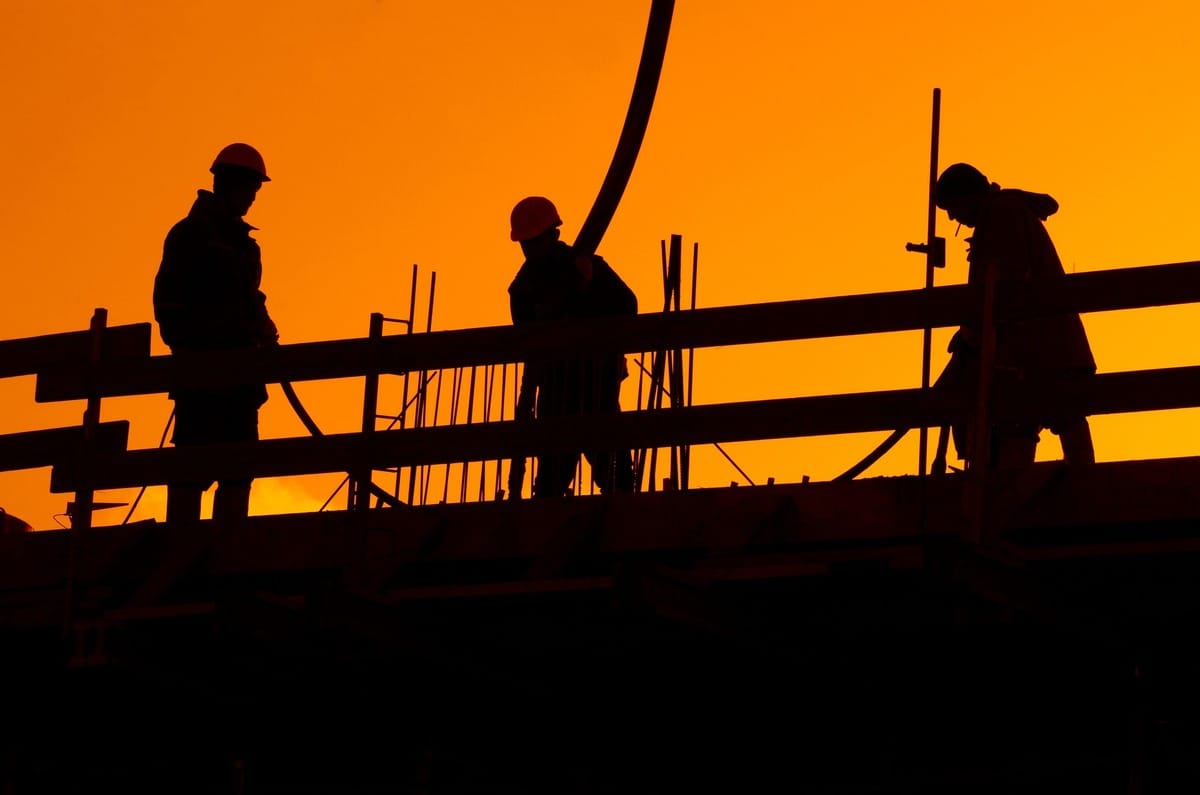- Full Brim Safety
- Posts
- Fall Protection Friday: Conquering Fall Hazards - A Hierarchy in Action
Fall Protection Friday: Conquering Fall Hazards - A Hierarchy in Action
Full Brim Safety: Build Smart, Build Safe

Fall Protection Friday: Conquering Fall Hazards - A Hierarchy in Action
This Weeks Toolbox Talk Attached Below!
Welcome back, let's Build Smart & Build Safe! This week, we've drilled down on the power of the Hierarchy of Controls to prevent workplace hazards. Today, on Fall Protection Friday, let's put this vital framework into practice by tackling a common and dangerous scenario: working on a leading edge of a roof.
Imagine a crew tasked with installing roofing on a new commercial building. The leading edge presents a significant fall hazard. Let's see how we can apply the Hierarchy of Controls to ensure their safety:
1. Elimination (The Ideal Solution):
Can we eliminate the need to work at the unprotected edge altogether? Perhaps the roof design could be modified to include parapet walls from the outset, acting as permanent fall protection. While not always fully achievable, striving for elimination should be the first thought.
2. Substitution (A Safer Approach):
Can we substitute the method of access or the task itself to reduce the fall risk? Instead of workers directly at the leading edge, could a mobile elevated work platform (MEWP) or a scaffold system with built-in guardrails be used to access and perform the work from a protected position? This substitutes a direct fall hazard with a more controlled and guarded environment.
3. Engineering Controls (Built-In Protection):
What physical barriers can we engineer to prevent falls? If direct work at the edge is necessary, installing temporary guardrail systems along the leading edge provides a physical barrier. Properly installed and inspected permanent anchor points for personal fall arrest systems are another crucial engineering control.
4. Administrative Controls (Safe Work Practices):
How can we establish safe work procedures and training to minimize the risk? Implementing a comprehensive fall protection plan that outlines safe work procedures for leading edge work is essential. This includes establishing work zones, implementing a permit-to-work system, providing thorough training on fall hazards and the proper use of fall protection equipment, and ensuring constant supervision to enforce safe practices. Scheduled breaks and rotation of tasks can also combat fatigue, a contributing factor to falls.
5. Personal Protective Equipment (PPE) (The Last Line of Defense):
What personal protective equipment is necessary when other controls are not fully effective? When working at the leading edge, even with other controls in place, a Personal Fall Arrest System (PFAS) – consisting of a full-body harness, a properly selected lanyard, and a proper anchor point – is crucial. This system will not prevent a fall, but it will arrest a fall in progress and minimize the severity of injury. Proper installation, inspection and training on the use of this PPE are paramount.
In this scenario, the safest approach involves a combination of controls, prioritizing the higher levels of the hierarchy. While PPE is a critical last resort, relying solely on it without exploring elimination, substitution, engineering, and administrative controls leaves workers unnecessarily vulnerable.
This Fall Protection Friday, let's commit to thinking critically about fall hazards and proactively applying the Hierarchy of Controls. By working our way up this safety ladder, we can build a smarter, safer future where falls become a thing of the past.
Don’t forget to download the Toolbox Talk (attached below) to Document this weeks training!
Don't forget to sign your friends up for Full Brim Safety for your daily dose of construction safety tips!
-The Safety Man

